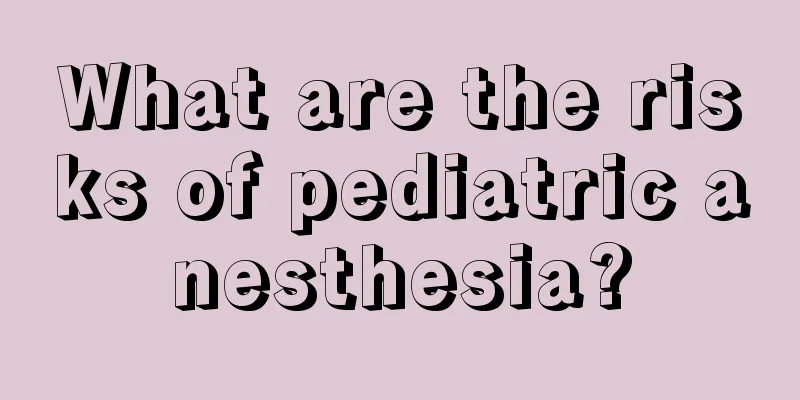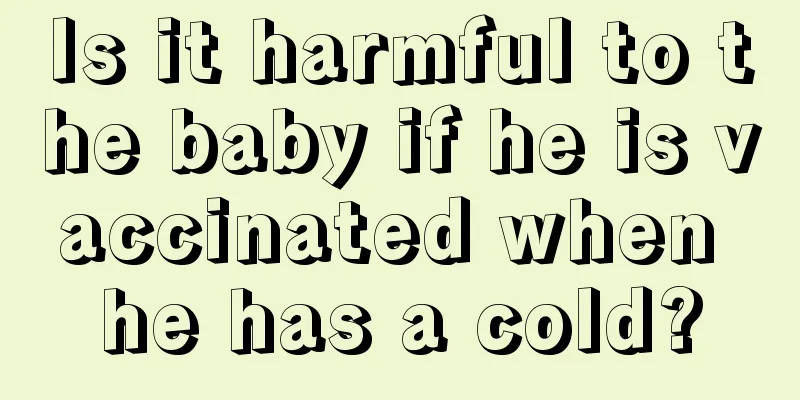What are the risks of pediatric anesthesia?

|
After a baby is born, it is inevitable that he will get sick. Some serious diseases generally need to be treated by surgery. Under normal circumstances, no matter whether it is a major operation or a minor operation, anesthesia is required. However, anesthesia has certain risks. However, with the continuous advancement of science and technology, the risk of anesthesia is getting smaller and smaller. Anesthesia for children is also risky. What are the risks of pediatric anesthesia? Risks of anesthesia in children 1. Respiratory complications Respiratory complications are the most common complications in children after surgery, and airway obstruction and respiratory depression are the most common respiratory complications. Clinical studies have shown that common causes of airway obstruction are tongue prolapse, secretions and foreign bodies blocking the airway. Because the tongue of infants and young children is relatively large, the nasopharynx is rich in lymphatic tissue, the pharyngeal cavity is relatively narrow, and there is still some residual anesthetic effect in the postoperative recovery period, and the muscle tension of the tongue and mandibular muscles has not fully recovered, all of these can cause tongue prolapse. If it can be discovered and treated in time, it is generally not a big deal. Foreign objects such as secretions or blood clots blocking the airway are also common causes of respiratory obstruction, especially in children with preoperative respiratory inflammation, no preoperative medication, or after oral and ENT surgery. Children with respiratory tract infections must actively control the infection and undergo elective surgery. For those who have not taken preoperative medication, anticholine drugs (atropine, scopolamine) should be used in time during the operation. Secretions and foreign objects in the throat should be cleared promptly. Rare complications such as laryngeal subglottic edema and laryngeal spasm require sufficient attention because they are serious and life-threatening. Laryngeal subglottic edema may be caused by an endotracheal tube that is too thick. Therefore, for those with an endotracheal tube that is too thick, a smaller endotracheal tube should be selected. Before extubation, dexamethasone should be injected intravenously to reduce edema caused by catheter compression of the mucosa. Nebulizer inhalation can be given after extubation. For children with a history of asthmatic tracheitis, dexamethasone should be injected intravenously before extubation to reduce the stress response of the airway. At the same time, the tube should be extubated when the anesthesia depth is appropriate, and then oxygen should be supplied by mask. For patients with severe laryngeal spasm and tracheal obstruction, emergency tracheotomy should be performed to save the child's life, or muscle relaxants should be injected intravenously to relieve spasms, and then tracheal intubation should be performed. Respiratory depression is another common complication of the respiratory system. It is more common after major surgery with deep anesthesia and prolonged duration. The effects of various anesthetic drugs have not been completely eliminated, causing inhibition of the respiratory center and a combined effect on the respiratory muscles. Depending on the situation, the narcotic analgesic antagonist naloxone or anticholine esterase and anticholine drugs can be used in combination, and other symptomatic treatments can be used. 2. Low blood pressure Hypotension is a common circulatory complication. In infants and young children, pressure receptors are poorly developed, and control over capacity blood vessels is poor, so the response to hypovolemia is poor. Hypotension is mostly caused by insufficient blood volume, such as fasting before surgery, bleeding during surgery, and postoperative bleeding and exudation without timely replenishment. For newborns and young infants, cardiac output depends more on a faster heart rate to maintain normal. Bradycardia can also cause hypotension, which should be corrected according to the cause. 3. Nausea and vomiting Nausea and vomiting are also common complications during the postoperative recovery period. It is more likely to occur in patients who undergo long operations, eye, ear, or upper abdominal surgeries, or who use ketamine or narcotic analgesics. Intravenous injection of haloperidol 75ug/kg during surgery can reduce the incidence of nausea and vomiting, and dexamethasone also has a good antiemetic effect. 4. Arrhythmia The main manifestation of arrhythmia in children is slow heart rate. Although the incidence of slow heart rate is not high, it must be taken seriously once it occurs. Because the cardiovascular system of infants and young children is not yet fully developed and the heart contains fewer components that can cause cardiovascular contraction, cardiac output depends more on heart rate rather than stroke volume. A slow heart rate means insufficient cardiac output. Some reports suggest that bradycardia in children is more worrisome than tachycardia. Therefore, if a slow heart rate occurs during anesthesia and anesthesia recovery in children, it should be taken seriously, and the ventilation status should be checked, adequate oxygen supply and atropine treatment should be given. 5. Delayed recovery of muscle tone The incidence of delayed muscle tone recovery in newborns is significantly higher than that in infants and children. In addition to being related to the slower drug metabolism in neonates, this is also closely related to keeping the neonates warm during surgery. If the body temperature of the newborn does not rise during anesthesia, the metabolism of anesthetic drugs such as muscle relaxants may be delayed, so attention should be paid to strengthening warmth preservation during the operation. During anesthesia, the body's heat production function is reduced, anesthetic drugs inhibit the infant's reflex process of maintaining normal body temperature and block the shiver reflex. Certain drugs dilate peripheral blood vessels and increase heat dissipation. Severe blood loss causes circulatory dysfunction and aggravates temperature disorders. Before and during surgery, large areas of the body surface are exposed, the body cavity is open, the organs are externalized, and the infusion of cold liquids and cold blood all aggravate the drop in body temperature. A high ambient temperature should be maintained during and after surgery, and intravenous infusion and flushing fluids should be heated when necessary. If the child is found to have weak spontaneous breathing, poor response to stimulation, and low muscle tone during extubation, neostigmine and naloxone can be given to antagonize the symptoms while strengthening the warmth. If necessary, the endotracheal tube can be retained and the child can be transferred to the ICU for further observation. |
<<: Chinese medicine formula for conditioning boys
>>: What should I do if my ten-year-old child has diarrhea?
Recommend
What disease is it that causes white spots on children's bodies?
In life, once people hear about or see white spot...
How to night train your child to urinate
Bedwetting is the most common problem for many ch...
When is the best time to wean your baby?
The baby is in a special critical period after bi...
9-year-old girl's breast development
We all know that the fruits we eat nowadays are g...
How to deal with children's tonsil pus
If a child's tonsils are festering, this dise...
What are the emergency measures for children’s stomachache and vomiting?
Children are weak and easily troubled by diseases...
What should I do if my 3-year-old baby catches a cold and vomits?
When babies are young, their physical constitutio...
Can a two month old baby sit?
Although two-month-old babies have adapted to lif...
What should I do if my baby coughs and vomits? Parents can do this
If the baby has a cough and vomiting symptoms, pa...
Symptoms of blue veins on baby's eyelids
Our careful parents will find that blue veins can...
What are the recipes for six-month-old babies?
Although breast milk is the best thing for childr...
What is the reason why my baby has yellow-green watery stool?
Diarrhea is often caused by eating spoiled food o...
What are the white spots on the nails of children?
It is very common to see white spots on children&...
What are the consequences of precocious puberty in children?
Precocious puberty has become a very common probl...
What to do if your child's lips turn blue
As children grow up, parents are more concerned a...









